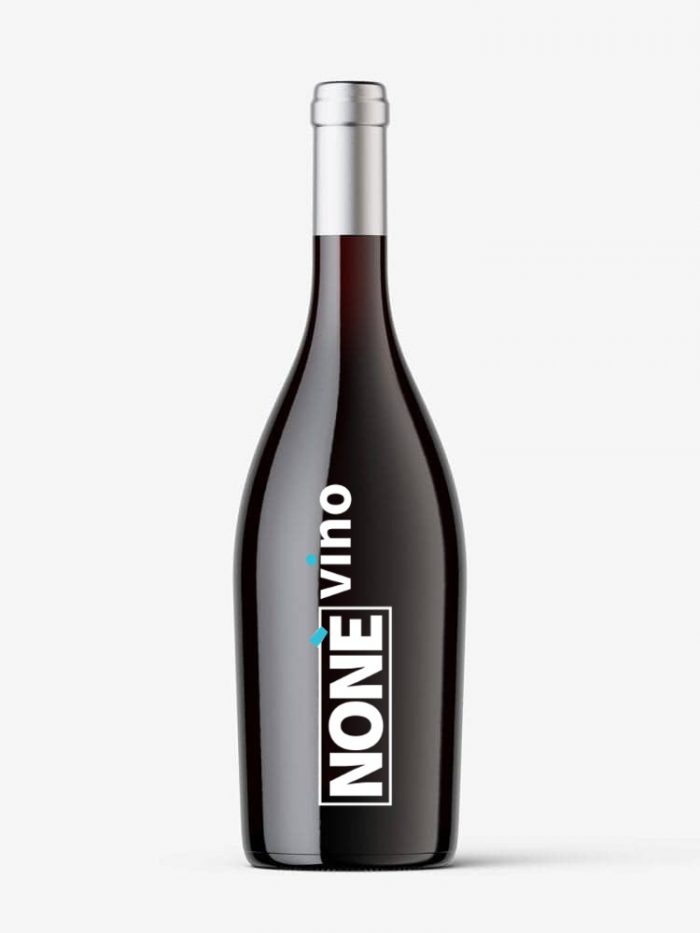Barbera del Monferrato DOC Appellation
Protected Designation of Origin (PDO)


Barbera appears in 1798, at the drafting of the first ampelography of the vines grown in the Piedmont area by Count Nuvolone, under the name of “Vitis vinifera Montisferratensis”. This denomination was due to the historical name of the hilly region, still the main center of cultivation of the Barbera grape: the Monferrato. In all likelihood, the Barbera grape variety was born from a spontaneous crossing of seeds from more ancient vines. It is certain, however, that the origins of the Barbera vine are very ancient, even if the documents that bear witness to it date back only to a few centuries ago. In fact, the first formal trace of Barbera is found in an 18th century document preserved in the municipality of Nizza Monferrato.
In chronological order, the first great praise to Barbera is told by Paolo Diacono according to which in the battle of Refrancore in 663, the ranks of the Lombards of Grimaldo beat the Franks after having drunk them with wine from the nearby cellars. In fact, it is said that for the occasion the Lombards filled numerous amphorae with this wine, which they disseminated specifically for the fields. These served as a reminder for the Franks who greedily emptied them.
Today Barbera wine represents about 50% of the entire wine production of Piedmont. It can be said, in fact, that Barbera is the Piedmont wine par excellence to the point of identifying itself with the region’s wine image.
The Barbera del Monferrato DOC wine obtained the recognition of the Controlled Designation of Origin on January 9, 1970.
Territory
The geographical area dedicated to the production of the Barbera del Monferrato DOC wine extends over the Monferrato hills of the Asti and Alessandria area, in an area that is adequately ventilated, bright and favorable to the fulfillment of all the vegetative-productive functions of the vineyards.
The Production Area of the Barbera del Monferrato DOC wine is located in:
– province of Alessandria and includes the territory of the municipalities of
a) Alto Monferrato : Acqui, Alice Bel Colle, Belforte, Bergamasco, Borgoratto Alessandrino, Bistagno, Carpeneto, Capriata d’Orba, Cartosio, Carentino, Cassine, Cassinelle, Castelletto d’Erro, Castelletto d’Orba, Castelnuovo Bormida, Cavatore, Cremolino, Denice, Frascaro, Gamalero, S. Rocco di Gamalero, Grognardo, Lerma, Melazzo, Merana, Malvicino, Molare, Montaldeo, Montaldo Bormida, Morbello, Morsasco, Montechiaro d’Acqui, Orsara Bormida, Ovada, Pareto, Ponti, Ponzone, Prasco, Predosa, Ricaldone, Rivalta Bormida, Rocca Grimalda, Sezzadio, Silvano d’Orba, Spigno Monferrato, Strevi, Tagliolo, Terzo, Trisobbio, Visone;
b) Lower Monferrato: Alfiano Natta, Altavilla Monferrato, Bassignana, Camagna, Camino, Casale Monferrato, Castelletto Merli, Castelletto Monferrato, Cellamonte, Cereseto, Cerrina, Coniolo, Conzano, Cuccaro, Fubine, Frassinello Monferrato, Gabiano, Lu Monferrato, Masio, Mirabello Monferrato, Mombello Monferrato, Moncestino, Montecastello, Murisengo, Occimiano, Odalengo Grande, Odalengo Piccolo, Olivola, Ottiglio Monferrato, Ozzano, Pomaro Monferrato, Pecetto di Valenza, Pietra Marazzi, Pontestura, Ponzano Monferrato, Quargnento, Rosignano Monferrato, Rivarone, Sala, San Salvatore Monferrato , San Giorgio Monferrato, Serralunga di Crea, Solonghello, Terruggia, Treville, Valenza, Vignale, Villadeati, Villamiroglio.
– province of Asti and includes the territory of the municipalities of Agliano Terme, Albugnano, Antignano, Aramengo, Asti, Azzano d’Asti, Baldichieri, Belveglio, Berzano San Pietro, Bruno, Bubbio,Buttigliera d’Asti, Calamandrana, Calliano, Calosso, Camerano Casasco, Canelli , Cantarana, Capriglio, Casorzo, Cassinasco, Castagnole Lanze, Castagnole Monferrato, Castel Boglione, Castell’Alfero, Castellero, Castelletto Molina, Castello d’Annone, Castelnuovo Belbo, Castelnuovo Calcea, Castelnuovo Don Bosco, Castel Rocchero, Celle Enomondo, Cerreto d ‘Asti, Cerro Tanaro, Cessole, Chiusano d’Asti, Cinaglio, Cisterna d’Asti, Coazzolo, Cocconato, Corsione, Cortandone, Cortanze, Cortazzone, Cortiglione, Cossombrato, Costigliole d’Asti, Cunico, Dusino San Michele, Ferrere, Fontanile , Frinco, Grana, Grazzano Badoglio, Incisa Scapaccino, Isola d’Asti, Loazzolo, Maranzana, Maretto, Moasca,Mombaldone, Mombaruzzo, Mombercelli, Monale, Monastero Bormida, Moncalvo, Moncucco Torinese, Mongardino, Montabone, Montafia, Montaldo Scarampi, Montechiaro d’Asti, Montegrosso d’Asti, Montemagno, Montiglio Monferrato, Moransengo, Nizza Monferrato, Olmo Gentile, Passerano Marmorito , Penango, Piea, Pino d’Asti, Piovà Massaia, Portacomaro, Quaranti, Refrancore, Revigliasco d’Asti, Roatto, Robella, Rocca d’Arazzo, Roccaverano, Rocchetta Palafea, Rocchetta Tanaro, San Damiano d’Asti, San Giorgio Scarampi , San Martino Alfieri, San Marzano Oliveto, San Paolo Solbrito, Scurzolengo, Serole Sessame, Settime, Soglio, Tigliole, Tonco, Tonengo, Vaglio Serra, Valfenera, Vesime, Viale d’Asti, Viarigi, Vigliano, Villafranca d’Asti, Villa San Secondo and Vinchio.
Vinification and Aging
During the vinification phases, only loyal and constant oenological practices of the area are allowed, suitable to give the wines their peculiar quality characteristics.
The oenological winemaking practices of the DOC Barbera del Monferrato wine include, among other things, that:
– The maximum yield of grapes into DOC Barbera del Monferrato wine must not exceed 70%; if these parameters are exceeded within the limit of 5%, the excess will not be entitled to the DOC. Beyond these limits the right to DOC for the whole product lapses.
– Under certain conditions, the grapes destined for the production of the Barbera del Monferrato DOC wine can also be used for the production of the DOC Monferrato Rosso, Monferrato Chiaretto or Ciaret and Piemonte Barbera wines.
– Under certain conditions, the Barbera del Monferrato DOC wine can be reclassified into the Monferrato Rosso and Piemonte Barbera appellations.
– In the designation of the Barbera del Monferrato DOC wine, the term Sparkling can be used if the wine respects the characteristics for consumption and is processed in accordance with the provisions of current legislation for sparkling wines.
– In the designation of the DOC Barbera del Monferrato wines, the term ” Vigna ” may be mentioned as long as it is followed by the relative toponym and certain winemaking practices are respected.
– On the labels of each type of DOC Barbera del Monferrato wine it is mandatory to report the year of production of the grapes, with the exception of the type of Sparkling Wine.


